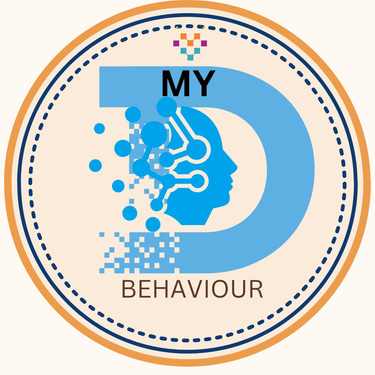The Historical Context of Digital Behavior Research
Digital Behavior Research and Innovation Part 2
Gajanan L. Bhonde,
7/30/20257 min read


Introduction to Digital Behavior Research
Digital behavior research is an emerging field that examines how individuals interact with digital environments and technologies. As society becomes increasingly technology-driven, understanding these interactions becomes essential for a variety of stakeholders, including educational institutions, businesses, and policymakers. This discipline not only investigates user behavior within digital platforms but also seeks to uncover the underlying motivations and patterns that shape these behaviors. Over the years, the evolution of the Internet, mobile devices, and social media has fundamentally altered the way individuals communicate and access information, establishing a compelling need for comprehensive research in this domain.
The significance of digital behavior research can be seen in its applications across various industries. For example, marketing strategies rely heavily on insights gleaned from user behavior analysis, allowing companies to tailor their offerings to meet consumer needs effectively. Similarly, educational technology developers can create more engaging learning experiences by understanding how students interact with digital resources. Furthermore, public policy frameworks can be informed by digital behavior research to protect users and promote fair practices in the digital landscape.
Historically, studies of user interactions with technology began with basic usability testing and gradually progressed with the advancement of analytics tools. These tools have facilitated the collection and analysis of vast amounts of data, providing researchers with the means to derive actionable insights. Early research focused primarily on user experience and functionality, but as the field has matured, it has expanded to encompass psychological and sociocultural factors influencing user interactions.
In summary, digital behavior research plays a crucial role in our understanding of the contemporary digital landscape. As technology continues to evolve, so too does the necessity for ongoing research that illuminates the complexities of user interactions within digital environments, ensuring a more informed approach to both academic inquiry and practical applications.
Early Foundations: Human-Computer Interaction (HCI)
The field of digital behavior research has its roots deeply embedded in the principles of human-computer interaction (HCI). HCI is defined as the study and planned design of human and computer interactions, which emerged prominently in the 1980s. At this intersection of technology and psychology, researchers began to explore how users engage with computers, emphasizing the significance of user interfaces and overall experience.
One of the earliest milestones in this domain was the introduction of graphical user interfaces (GUIs) in the 1970s and 1980s. GUIs revolutionized the way users interacted with computers, making technology more accessible and intuitive. Pioneers like Douglas Engelbart and the team at Xerox PARC played instrumental roles in developing systems that allowed users to navigate digital environments through visual elements rather than command lines. This shift was crucial in establishing the groundwork for modern digital environments and applications.
The development of usability engineering within HCI also marked a turning point in understanding user interactions. Researchers began to apply rigorous methodologies to evaluate how individuals interact with interfaces, leading to improved designs that prioritize user experience. This research revealed the necessity of thinking from the user's perspective, influencing software design practices fundamentally. Additionally, this era saw the introduction of user-centered design principles, which fostered a closer examination of how users perceive, interpret, and utilize digital tools.
As technology evolved, so did the focus of HCI research. The rapid advancement of the internet in the 1990s opened new dimensions for this field by allowing insight into user behavior in online environments. The insights garnered from early HCI studies are vital in shaping the broader framework of digital behavior research as it stands today. Understanding these foundations helps to appreciate the transition from simple interactions to complex behaviors we observe in the digital realm, paving the way for future innovations.
Pioneers of Digital Behavior: Engelbart and Sutherland
The evolution of digital behavior research owes a considerable debt to visionaries like Douglas Engelbart and Ivan Sutherland. Their pioneering work significantly impacted computer science, particularly in enhancing user interaction with technology. Engelbart, known for his revolutionary idea of augmenting human intelligence, introduced the concept of the computer as a tool to enhance cognitive processes. His development of the first computer mouse in the early 1960s transformed the landscape of user interface design, establishing a foundation for future innovations in human-computer interaction. Engelbart’s 1968 demonstration at the Fall Joint Computer Conference, often referred to as "The Mother of All Demos," showcased not merely interactive computing but the possibilities of collaborative technology, setting a precedent for digital communication and behavior research.
On a parallel front, Ivan Sutherland's work laid critical groundwork for graphical computing. His creation of Sketchpad in 1963 introduced the idea of computer graphics and interactive computing. By allowing users to draw directly on screens, Sutherland's invention expanded the horizons of what users could achieve through digital means, fundamentally altering the way people interact with technology. Sutherland’s frameworks and philosophies surrounding graphical user interfaces have become essential components in the study of digital behavior, demonstrating that computing is not just about hardware but also about user experience and engagement.
Combining their insights, Engelbart and Sutherland fostered a rich environment for the exploration of digital behavior, shaping our understanding of user interactions and technological integration. The principles laid by these pioneers continue to resonate in contemporary research, emphasizing the significance of developing technology that emphasizes user focus and enhances collaborative efforts. Their legacy endures, as current digital behavior studies often revisit the foundations they so thoughtfully constructed.
The Shift Toward Usability and User Experience
The evolution of research in the field of human-computer interaction (HCI) marks a significant shift towards usability and user experience (UX) as pivotal elements in the design of digital systems. Initially, early HCI studies aimed primarily at improving basic interface functionality, focusing on efficiency and the effectiveness of task completion. However, as technology evolved and user demands became more sophisticated, researchers recognized the need to expand the scope of HCI from simple task performance to a more holistic view of user engagement with digital products.
This transition towards emphasizing usability and UX reflects a broader understanding that successful interaction is not merely about completing tasks but also involves creating a positive emotional connection with users. Studies began to underscore the importance of user satisfaction as a critical factor driving the adoption of technology. Researchers began to evaluate not only how effectively users could achieve their goals but also how enjoyable and satisfying their interactions were. This focus on user-centric design led to the establishment of best practices that are now standard in the fields of digital innovation and behavior analysis.
Emergence of Complex Analyses in Digital Behavior
The field of digital behavior research has evolved significantly over the last few decades, moving from basic observations to sophisticated analyses that account for a multitude of factors. Initially, studies primarily focused on surface-level metrics such as clicks and page views. However, the increasing complexity of digital interactions has necessitated a more nuanced approach. Modern research now encompasses various dimensions including user engagement, emotional responses, and patterns of behavior that transcend mere numerical data.
One of the critical advancements in this area is the integration of data analytics. By leveraging big data techniques, researchers can analyze vast amounts of information to uncover trends and insights that were previously unattainable. This includes examining user engagement metrics in conjunction with emotional analytics, allowing for a deeper understanding of how users interact with digital platforms. Such methodologies have shifted the focus towards understanding the 'why' behind user actions rather than just the 'what', fostering a more comprehensive understanding of digital behaviors.
In addition to data analytics, user surveys have become an essential tool in digital behavior research. These surveys provide qualitative insights that quantitative data may overlook, capturing the nuances of user experience and feelings. Furthermore, usability testing has emerged as a critical methodology, allowing researchers to observe firsthand how users interact with a product and identify pain points that could be addressed to enhance user experience.
In conclusion, the transition to more complex analyses in digital behavior research reflects the dynamic nature of technology and its influence on user interaction. By integrating various methodologies such as data analytics, surveys, and usability testing, researchers can gain comprehensive insights into user engagement, emotions, and behavioral patterns, bridging the gap between data and actionable insights to inform future developments in digital design and strategy.
Implications for Modern Technology and Design
The exploration of digital behavior research has naturally led to significant implications for contemporary technology and design practices. Understanding user behavior patterns is crucial for developers and designers seeking to create engaging software, applications, and online environments. Insights gleaned from studying how users interact with technology enable professionals to enhance user experience, ensure accessibility, and promote satisfaction with digital products.
One of themost prominent areas shaped by digital behavior research is user interface (UI) design. By observing how users navigate through applications and websites, designers can refine interfaces to minimize confusion and improve usability. For instance, the placement of buttons, the choice of colors, and the flow of information are all informed by behavioral studies. These adjustments help ensure that users can utilize technology effectively, leading to higher levels of engagement and satisfaction.
Additionally, digital behavior research informs the development of personalized experiences. As businesses increasingly recognize the importance of tailored content and recommendations, understanding user preferences becomes vital. This knowledge allows developers to create algorithms that not only predict user needs but also adapt in real-time according to their interactions. Consequently, a seamless user experience is achieved, which not only retains users but also fosters brand loyalty.
Furthermore, the application of behavioral insights extends beyond aesthetics and customization; it impacts the ethical considerations around user engagement. By adhering to ethical standards in design, such as transparency and informed consent, technology can be developed to foster a healthy relationship between users and digital products. Thus, integrating findings from digital behavior research into the design process does not simply promote innovation but also emphasizes user welfare, which is increasingly relevant in today’s digital landscape.
Future Directions in Digital Behavior Research
The digital landscape is evolving at a rapid pace, resulting in an increased necessity for sophisticated research into digital behavior. As new technologies emerge, researchers must adapt their methodologies and frameworks to understand changing user interactions effectively. One significant area of focus for future directions includes the integration of advanced artificial intelligence (AI) and machine learning technologies. These tools have the potential to provide unparalleled insights into user behavior, enhancing the precision of data analysis and the ability to forecast trends.
Recent advancements in AI have demonstrated its capability to analyze vast amounts of data to identify patterns and correlations that may not be immediately apparent. This presents researchers with a profound opportunity to study digital behavior on an unprecedented scale. For instance, emerging trends indicate a growing reliance on AI-driven personalization in user experiences, which could significantly impact consumer behavior online. Understanding how these personalized experiences shape user interactions is an essential focal point for researchers moving forward.
Another critical area for exploration is the impact of social media algorithms on user behavior. With the increasing use of algorithms to curate content on platforms, researchers are tasked with examining how these changes influence user engagement, information dissemination, and even online communities. Furthermore, the ethical implications surrounding data privacy and user consent continue to be pivotal discussions within the realm of digital behavior research, necessitating comprehensive scrutiny from scholars and practitioners alike.
Moreover, as technology becomes further integrated into daily life through the Internet of Things (IoT), understanding the interplay between various digital devices and user behavior will become increasingly vital. Future research should prioritize interdisciplinary collaboration, combining insights from psychology, sociology, and computer science to develop a comprehensive understanding of the digital behavior landscape. By remaining adaptable and forward-thinking, researchers can navigate this rapidly changing environment and uncover significant insights into the nature of digital interactions.
